Venomous snakes to avoid in the United States
While death from a snake bite in the United States is rare, some snakes are very dangerous and need to be given a wide berth.
When you are outdoors, great care needs to be taken to avoid an encounter with any one of these four, most common, venomous snakes that can be found in the United States. We’re lucky here at Outdoor revival HQ because we don’t have much that’s poisonous about but when we are in areas inhabited by critters that can cause us some serious issues we’re much more careful and considered in what we and how we equip ourselves.
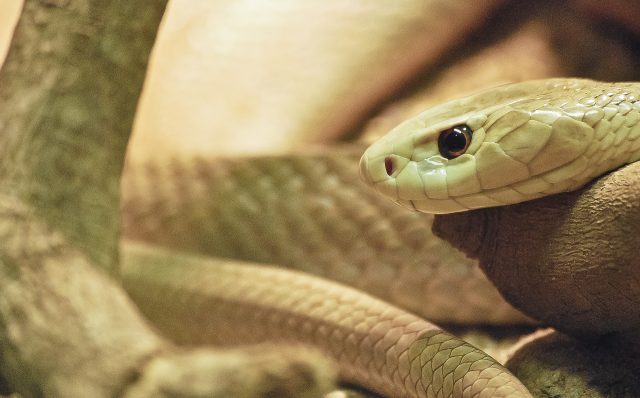
First things first, you do not want to be inspecting the snakes you meet on your travels to find out what kind they are, the best thing to do is just avoid them, or take a picture from a distance so that you’re not putting yourself in danger.
However, if someone does get bitten then it’s much more important to take a note of the main identifying characteristics so that an accurate identification can happen if antivenom is needed. Different snakes inject different poisons and need different antivenom.
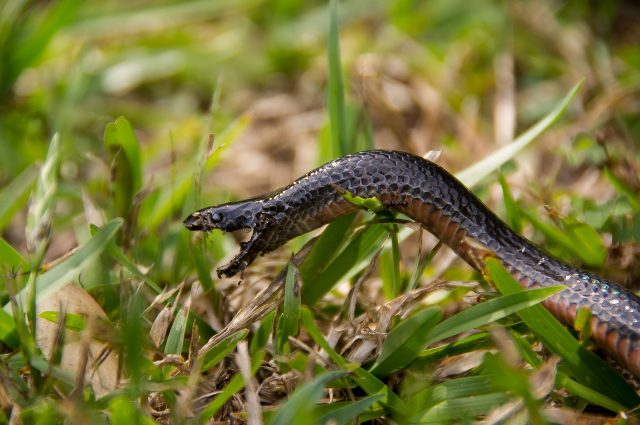
Most snake bite venom is neurotoxic, meaning it acts on the nervous system. It affects circulation, causes internal bleeding, and affects breathing.
If you or someone with you is bitten, the victim needs medical help as soon as possible. They should remain still and if possible keep the location of the bite lower than the heart.
The most common venomous snakes in the United States are:
Rattlesnakes
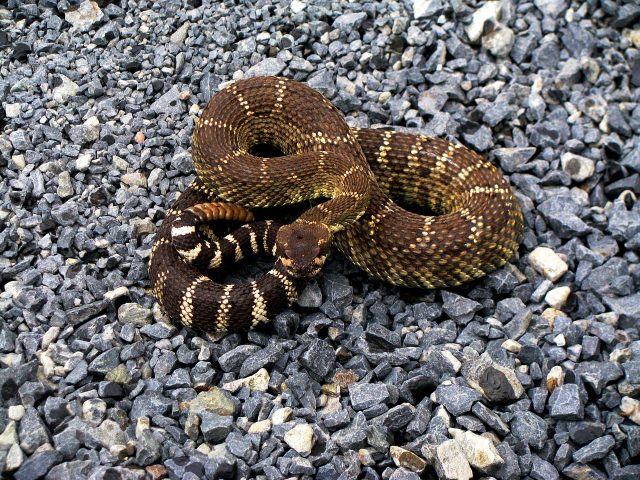
Copperheads
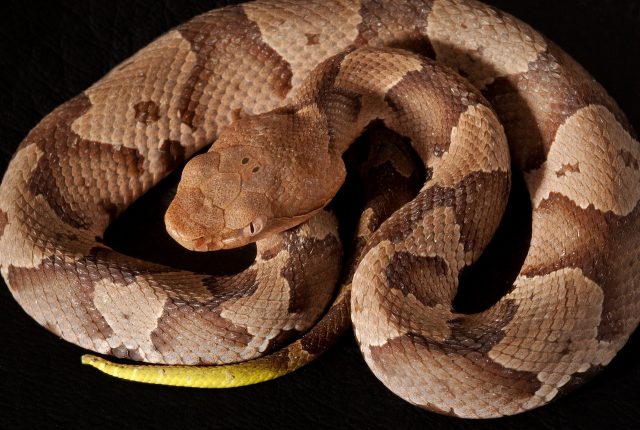
Cottonmouths
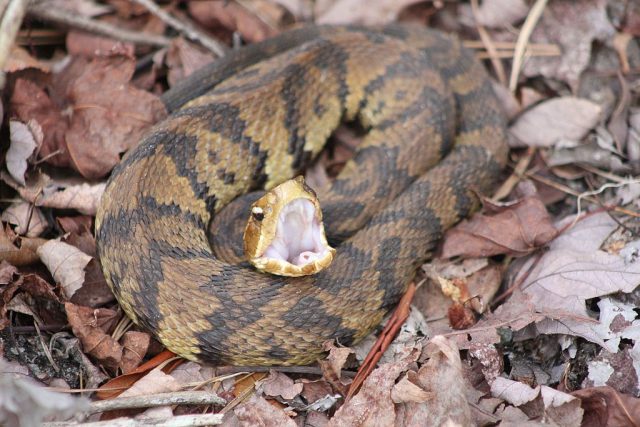
Coral snakes
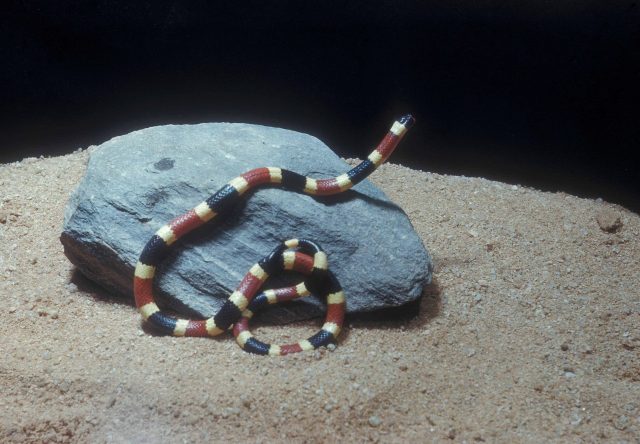
The first three are known as pit vipers. This is because of the “holes” on their faces, usually above the nostrils and between the eyes, or on either side of the face. These are heat sensory areas which guide the snake towards warm-blooded prey.
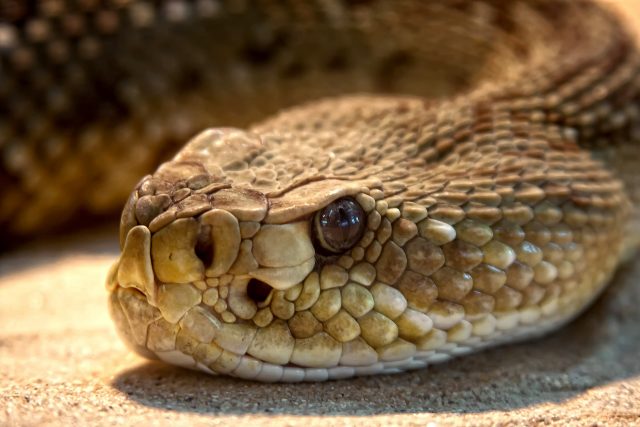
Venomous snakes also commonly have “slit” pupils, like a cat’s eyes.
The heads of the first three are triangular in shape and flat, as opposed to rounded. Their fangs are thin, retractable, and hollow, perfect for delivering their venom by injecting it into the skin.
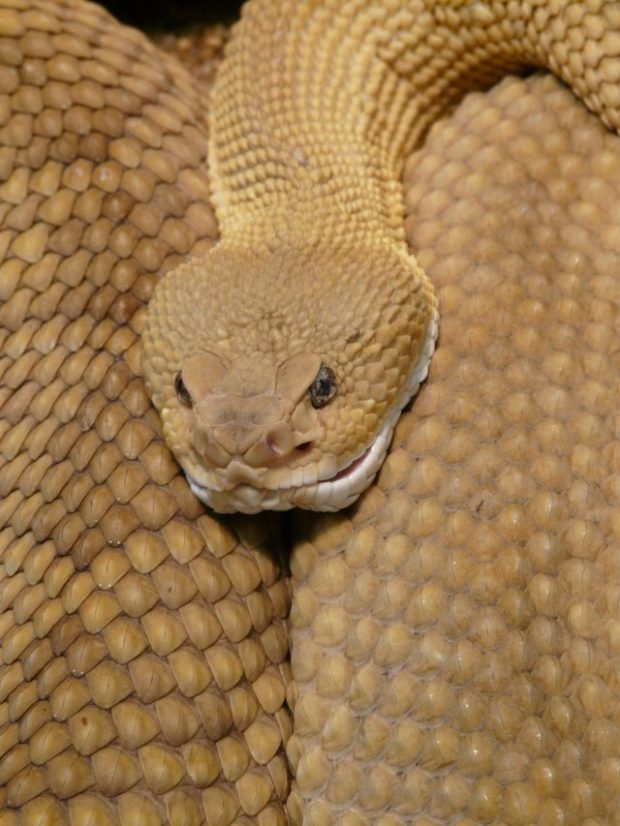
Most snakes in the United States are varied in color and are not solid colors. They come in stripes, diamond shape patterns, or colors arranged in bands.
The underside of the tail of venomous snakes usually has a single row of scales, while there is a double row in the case of non-venomous snakes.
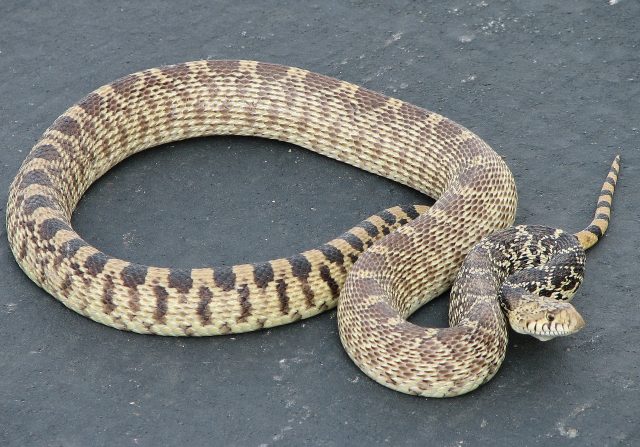
In the case of rattlesnakes, they have the distinctive keratin rattle at the ends of their tails. This is shaken as an alarm when the snake feels threatened. You have been warned! This is a good thing as it means there is probably some time to get out the way, if you stumble right on to it it’s not going to bother rattling it’s tail as a warning.
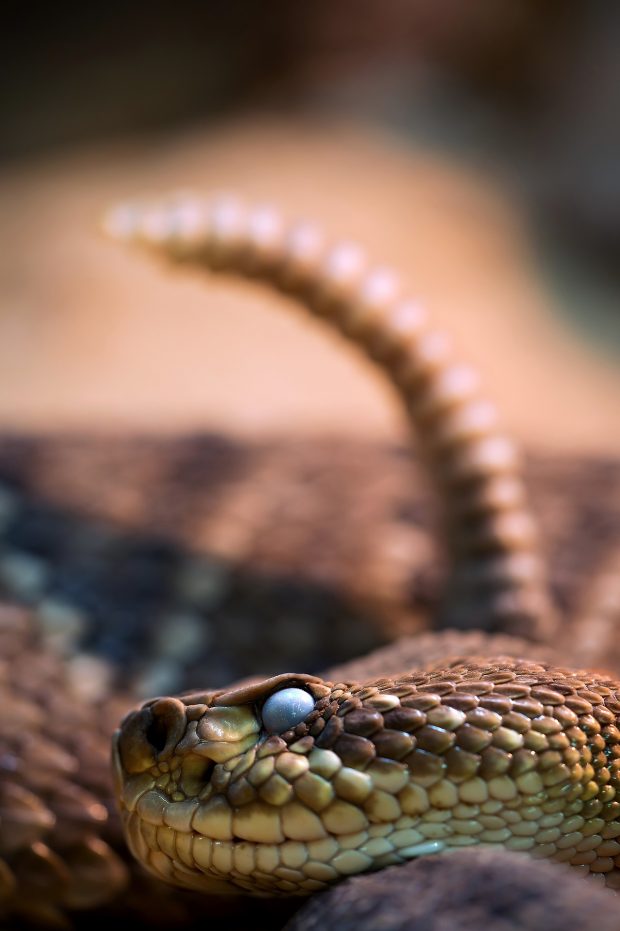
Coral snakes, while also venomous, are the exception when it comes to the above characteristics. Their pupils are round and not slit. Their heads are also rounded and not flat. The coloring is yellow, red, and black. There are non-venomous snakes with this coloring also, but this rhyme is well to remember – “Red on yellow, kill a fellow.”
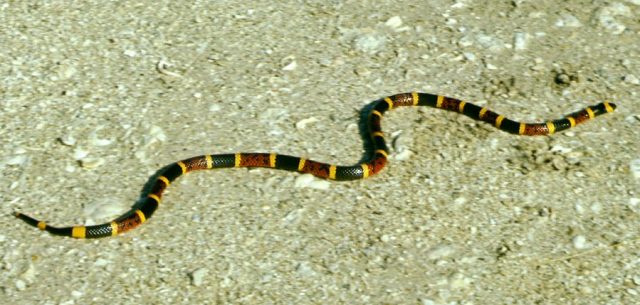
If you find a snakeskin that’s been shed where you are, it will indicate there are snakes in the area. Be cautious, but they will probably be more afraid of you than you need to be of them. They belong there and will not attack unless they feel threatened.
If you have any comments then please drop us a message on our Outdoor Revival Facebook page
If you have a good story to tell or blog let us know about it on our FB page, we’re also happy for article or review submissions, we’d love to hear from you.
We live in a beautiful world, get out there and enjoy it.
Outdoor Revival – Reconnecting us all with the Outdoors





